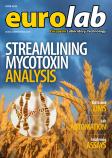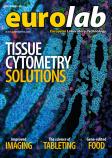Transcription Factors (TFs) are central regulators of gene expression and are implicated in numerous diseases, including cancer, autoimmune, neurological, and metabolic disorders. Once considered 'undruggable,' TFs are now therapeutically targeted using selective modulators, degraders, and innovative approaches like PROTACs.
Recent FDA approvals, such as belzutifan (for VHL-associated renal cell carcinoma and elacestrant (for breast cancer), highlight clinical progress. PROTACs and direct small-molecule inhibitors—like those for FOXA1—are expanding treatment options. Artificial intelligence, CRISPR, RNA interference, and engineered modulators promise even greater precision. These advances are transforming treatment paradigms, offering new hope for patients with previously untreatable or difficult-to-treat diseases.
The master regulators
The human genome encodes approximately 1,600 TFs, one of the largest protein families and an intricate regulatory network that controls when, where, and how genes are expressed 1. These molecular machines achieve regulatory specificity through diverse DNA-binding domains that recognize distinct nucleotide sequences, determining cellular fate decisions and responses to pathological conditions (Figure 1)1–3.
Figure 1. The Human TF Repertoire1. (A) Schematic of a prototypical TF. (B) Number of TFs and motif status for each NA-binding domain (DBD) family. Inset displays the distribution of the number of C2H2-ZF domains for classes of effector domains (KRAB, SCAN, or BTB domains); “Classic” indicates the related and highly conserved SP, KLF, EGR, GLI GLIS, ZIC, and WT proteins.
Disease mechanisms associated with transcription factors (TFs)
Over 19% of the TFs have been shown to be associated with at least one disease phenotype1. Cancer represents the most extensively studied disease category involving transcription factor dysregulation, with multiple TFs driving distinct oncogenic mechanisms2,4–6. Hypoxia-inducible factors (HIFs), MYC, ETS-1, and β-catenin function as master regulators that constitutively activate oncogenic pathways, promoting tumor cell proliferation, survival, altered metabolism, and metastatic spread5. In contrast, p53 mutations impair critical tumor suppression mechanisms, enabling uncontrolled cellular growth across breast, prostate, and hematologic malignancies2. Hormone-dependent cancers rely heavily on FOXA1 and ESR1 for tumorigenesis in breast and prostate tissues, while STAT3 sustains cancer cell survival and facilitates immune evasion across multiple cancer types5. Additionally, BRD4 and KLF5 regulate oncogenic transcription programs specifically in basal-like breast cancer5.
Autoimmune diseases involve TFs that disrupt immune homeostasis through various mechanisms. Tcf1 and Lef1 maintain CD8+ T-cell identity, and their disruption skews CD4+/CD8+ ratios, compromising immune function7. STAT6 and STAT3 mediate inflammatory pathways in atopic dermatitis and hidradenitis suppurativa, while IRAK4 drives inflammation in hidradenitis suppurativa, making it an attractive target for degrader therapies8. The NF-κB/STAT/AP-1 axis synergistically activates pro-inflammatory genes in synovial cells, perpetuating joint destruction in rheumatoid arthritis9–11.
Neurological disorders feature TFs controlling neural development and survival pathways. POU3F2 regulates neocortical development genes, with dysregulation linked to schizophrenia and bipolar disorder12. FOXO family members modulate neuronal survival and autophagy, contributing to neurodegeneration when dysfunctional13. TFEB controls lysosome biogenesis, and its impaired function exacerbates Alzheimer's pathology14,15.
Metabolic diseases mainly involve TFs regulating glucose homeostasis and adipose tissue function. HNF1α and HNF4α control insulin production and glucose metabolism, with mutations causing maturity-onset diabetes (MODY)15. HOXA5 regulates adipocyte differentiation and distribution, driving obesity-related inflammation and insulin resistance when deficient16. FOXM1 mediates diabetic complications through endothelial dysfunction17.
Cardiovascular diseases feature BRD4, EP300, and MED1, which stabilise DNA loops regulating cardiac gene expression18. Their dysregulation drives congenital heart disease and atherosclerosis through disrupted cardiac transcriptional programs18.
TFs as Therapeutic Targets
Unlike enzymes with well-defined active sites, TFs function through relatively featureless protein-protein and protein-DNA interaction surfaces. Historically, TFs have been considered “undruggable” due to their lack of traditional binding pockets suitable for small molecule drugs19. Nevertheless, research advancements have been made to overcome the hurdles.
In the 1970s, the creation of tamoxifen—a selective estrogen receptor modulator—revolutionized breast cancer treatment by showing that TFs could be targeted with competitive antagonists 20,21. This marked one of the first rational drug design strategies for directly inhibiting TFs. Similarly, extensive research has focused on developing compounds that block hypoxia-inducible factor 1 (HIF-1) activation for cancer therapy 22.
Nuclear hormone receptor modulators and indirect targeting strategies remain the gold standard for TF therapeutics 23. Selective estrogen receptor modulators (SERMs) and degraders (SERDs), including tamoxifen, fulvestrant, and the recently approved elacestrant, are the most successful agents for hormone receptor-positive breast cancer. SERMs act as competitive antagonists to block receptor activityblock receptor activity, while SERDs induce receptor degradation through ubiquitin-proteasome pathways21. Recently, belzutifan—the first direct small molecule inhibitor of the HIF-2α—was approved in 2021 for von Hippel-Lindau (VHL) disease 24. This breakthrough demonstrates the potential of directly targeting TF protein-protein interaction domains 25. The FDA has approved seven drugs targeting TF for the treatment of cancers, autoimmune diseases, and cardiovascular diseases (as shown in Table 1).
Table 1. Featured FDA-Approved TF Inhibitors
Breakthroughs in TF Therapeutics
The past decade has witnessed remarkable progress in TF therapeutics, driven by innovative approaches including proteolysis targeting chimeras (PROTACs), direct TF inhibitors, and combination strategies.
Breakthroughs in PROTACs
PROTACs have been the most clinically advanced approach for targeting TFs since they were first designed by Sakamoto and Crews in 20018,32–34. These bifunctional molecules simultaneously bind target proteins and E3 ubiquitin ligases, facilitating selective protein degradation through the ubiquitin-proteasome system33. TF-PROTACs have demonstrated efficacy against NF-κB and E2F, opening new therapeutic avenues for multiple diseases34.
Figure 2. PROTAC (proteolysis-targeting chimera) mechanism: a bifunctional molecule recruits E3 ligase to the protein of interest (POI), triggering its ubiquitination and subsequent degradation by the proteasome 32.
Figure 2. PROTAC (proteolysis-targeting chimera) mechanism: a bifunctional molecule recruits E3 ligase to the protein of interest (POI), triggering its ubiquitination and subsequent degradation by the proteasome 32.
Table 2 highlights PROTAC compounds targeting TFs that are currently in clinical trials 35. Notably, ARV-471 (vepdegestrant), which degrades the estrogen receptor, and BMS-986365 (CC-94676), targeting the androgen receptor, have shown strong clinical efficacy with protein degradation rates over 90% in cancer patients 36. In February 2024, the FDA granted vepdegestrant Fast Track designation for treating ER+/HER2- advanced or metastatic breast cancer in adults previously treated with endocrine therapy 37.table 1
Table 2 PROTACs Targeting TFs in Clinical Trials (Source: https://synapse.zhihuiya.com/)
Breakthroughs in Small Molecules (H3)
Recent years have seen significant strides in targeting challenging transcription factors through diverse mechanisms. Small molecule inhibitors targeting STAT3 have made notable progress, with several compounds showing promise in clinical trials 38,39. While no STAT3 inhibitors are yet FDA-approved, the development of STAT3 PROTACs is a promising strategy to address the challenges of directly targeting this TF 40. NF-κB pathway inhibitors have also advanced through clinical development, with several small molecules targeting various components of this key inflammatory TF pathway 41. These agents are especially promising for treating inflammatory diseases, certain cancers, and antuimmune diseases driven by NF-κB. Notably, Direct Targeting of FOXA1: WX-02-23 is a breakthrough as the first small molecule to directly bind TF FOXA1, covalently targeting a cryptic cysteine residue (C258) when FOXA1 is DNA-bound, altering its binding specificity and demonstrating that TFs can be drugged via allosteric modulation 19.
Future Directions
The future of therapeutics targeting TFs focuses on combination therapies and precision medicine. Artificial intelligence is accelerating drug discovery by using machine learning to predict binding sites, optimize drug design, and identify patient-specific targets 42–44. Emerging technologies—such as CRISPR-based approaches 45, RNA interference46, and engineered TF modulators47 are set to transform the field. These platforms enable highly precise targeting of specific TF functions while reducing off-target effects.
Featured Products of Transcription Protein

Conclusion
TF therapeutics have moved from concept to clinical reality, with multiple compounds reaching late-stage trials and regulatory approval 32. Advances in drug discovery, precision delivery, and personalized medicine now allow for highly specific targeting of disease-driving mechanisms 48. As these therapies prove both safe and effective in oncology, autoimmune, and genetic diseases, they are poised to redefine treatments and bring new hope to patients with previously untreatable conditions.
References
1. Lambert, S. A. et al. The Human Transcription Factors. Cell 172, 650–665 (2018).
2. Huilgol, D., Venkataramani, P., Nandi, S. & Bhattacharjee, S. Transcription Factors That Govern Development and Disease: An Achilles Heel in Cancer. Genes 2019, Vol. 10, Page 794 10, 794 (2019).
3. Lee, T. I. & Young, R. A. Transcriptional regulation and its misregulation in disease. Cell 152, 1237–1251 (2013).
4. Shiah, J. V., Johnson, D. E. & Grandis, J. R. Transcription Factors and Cancer: Approaches to Targeting. Cancer Journal (United States) vol. 29 38–46 Preprint at https://doi.org/10.1097/PPO.0000000000000639 (2023).
5. Vishnoi, K., Viswakarma, N., Rana, A. & Rana, B. Transcription Factors in Cancer Development and Therapy. Cancers (Basel) 12, 2296 (2020).
6. Hasan, A., Khan, N. A., Uddin, S., Khan, A. Q. & Steinhoff, M. Deregulated transcription factors in the emerging cancer hallmarks. Semin Cancer Biol 98, 31–50 (2024).
7. Shan, Q. et al. Tcf1 and Lef1 provide constant supervision to mature CD8+ T cell identity and function by organizing genomic architecture. Nature Communications 2021 12:1 12, 1–20 (2021).
8. Békés, M., Langley, D. R. & Crews, C. M. PROTAC targeted protein degraders: the past is prologue. Nat Rev Drug Discov 21, 181–200 (2022).
9. Park, M. H. & Hong, J. T. Roles of NF-κB in Cancer and Inflammatory Diseases and Their Therapeutic Approaches. Cells 5, 15 (2016).
10. Sun, S. C., Chang, J. H. & Jin, J. Regulation of NF-κB in Autoimmunity. Trends Immunol 34, 282 (2013).
11. Aud, D. & Peng, S. L. Mechanisms of disease: Transcription factors in inflammatory arthritis. Nature Clinical Practice Rheumatology vol. 2 434–442 Preprint at https://doi.org/10.1038/ncprheum0222 (2006).
12. Pearl, J. R. et al. Genome-Scale Transcriptional Regulatory Network Models of Psychiatric and Neurodegenerative Disorders. Cell Syst 8, 122-135.e7 (2019).
13. Santos, B. F., Grenho, I., Martel, P. J., Ferreira, B. I. & Link, W. FOXO family isoforms. Cell Death & Disease 2023 14:10 14, 1–16 (2023).
14. Rai, S. N. et al. Therapeutic Potential of Vital Transcription Factors in Alzheimer’s and Parkinson’s Disease With Particular Emphasis on Transcription Factor EB Mediated Autophagy. Front Neurosci 15, 777347 (2021).
15. Boj, S. F., Párrizas, M., Maestro, M. A. & Ferrer, J. A transcription factor regulatory circuit in differentiated pancreatic cells. Proc Natl Acad Sci U S A 98, 14481–14486 (2001).
16. Parrillo, L. et al. The Transcription Factor HOXA5: Novel Insights into Metabolic Diseases and Adipose Tissue Dysfunction. Cells 12, 2090 (2023).
17. Zhao, B. et al. Role of transcription factor FOXM1 in diabetes and its complications (Review). Int J Mol Med 52, 101 (2023).
18. Mao, S. et al. Role of transcriptional cofactors in cardiovascular diseases. Biochem Biophys Res Commun 706, 149757 (2024).
19. Lee, Y., Yoo, S., Cho, S., Kim, I. & Kim, I. S. Advances in transcription factor delivery: Target selection, engineering strategies, and delivery platforms. Journal of Controlled Release 384, 113885 (2025).
20. Moyer, C. L. & Brown, P. H. Targeting nuclear hormone receptors for the prevention of breast cancer. Front Med (Lausanne) 10, 1200947 (2023).
21. Shah, M. et al. US Food and Drug Administration Approval Summary: Elacestrant for Estrogen Receptor–Positive, Human Epidermal Growth Factor Receptor 2–Negative, ESR1-Mutated Advanced or Metastatic Breast Cancer. Journal of Clinical Oncology 42, 1193–1201 (2024).
22. Shirai, Y. et al. An Overview of the Recent Development of Anticancer Agents Targeting the HIF-1 Transcription Factor. Cancers 2021, Vol. 13, Page 2813 13, 2813 (2021).
23. Alexander, S. P. H. et al. The Concise Guide to PHARMACOLOGY 2023/24: Nuclear hormone receptors. Br J Pharmacol 180, S223–S240 (2023).
24. Toledo, R. A. et al. Hypoxia-Inducible Factor 2 Alpha (HIF2α) Inhibitors: Targeting Genetically Driven Tumor Hypoxia. Endocr Rev 44, 312–322 (2023).
25. Wu, X., Lazris, D., Wong, R. & Tykodi, S. S. Belzutifan for the treatment of renal cell carcinoma. Ther Adv Med Oncol 17, (2025).
26. Raynor, J. W., Minor, W. & Chruszcz, M. Dexamethasone at 119 K. Acta Crystallogr Sect E Struct Rep Online 63, (2007).
27. Drug Approval Package: Coreg (Carvedilol) NDA #20-297/S9. https://www.accessdata.fda.gov/drugsatfda_docs/nda/2003/20-297s009_Coreg.cfm.
28. Drug Approval Package: Brand Name (Generic Name) NDA #. https://www.accessdata.fda.gov/drugsatfda_docs/nda/2013/204063orig1s000toc.cfm.
29. Drug Approval Package: Azulfidine (Sulfasalazine) NDA #21-243. https://www.accessdata.fda.gov/drugsatfda_docs/nda/2000/21243_Azulfidine.cfm.
30. Ehrlich, L. A. et al. U.S. Food and Drug Administration approval summary: Eltrombopag for the treatment of pediatric patients with chronic immune (idiopathic) thrombocytopenia. Pediatr Blood Cancer 64, (2017).
31. FDA approves elacestrant for ER-positive, HER2-negative, ESR1-mutated advanced or metastatic breast cancer | FDA. https://www.fda.gov/drugs/resources-information-approved-drugs/fda-approves-elacestrant-er-positive-her2-negative-esr1-mutated-advanced-or-metastatic-breast-cancer.
32. Jung, H. & Lee, Y. Targeting the Undruggable: Recent Progress in PROTAC-Induced Transcription Factor Degradation. Cancers (Basel) 17, 1871 (2025).
33. Sakamoto, K. M. et al. Protacs: Chimeric molecules that target proteins to the Skp1-Cullin-F box complex for ubiquitination and degradation. Proc Natl Acad Sci U S A 98, 8554–8559 (2001).
34. Liu, J. et al. TF-PROTACs Enable Targeted Degradation of Transcription Factors. J Am Chem Soc 143, 8902–8910 (2021).
35. PROTAC Clinical Progress Search Results - Global Drug Intelligence Database. https://synapse.zhihuiya.com/clinical-progress-list?query_id=76a89454-a6f6-46bb-a6b7-1a3c9ef0950c&tab=analysis.
36. Wang, X. et al. Annual review of PROTAC degraders as anticancer agents in 2022. Eur J Med Chem 267, 116166 (2024).
37. Arvinas and Pfizer’s Vepdegestrant (ARV-471) Receives FDA Fast Track Designation for the Treatment of Patients with ER+/HER2- Metastatic Breast Cancer | Pfizer. https://www.pfizer.com/news/announcements/arvinas-and-pfizers-vepdegestrant-arv-471-receives-fda-fast-track-designation.
38. Lapidot, M. et al. Inhibitors of the Transcription Factor STAT3 Decrease Growth and Induce Immune Response Genes in Models of Malignant Pleural Mesothelioma (MPM). Cancers 2021, Vol. 13, Page 7 13, 7 (2020).
39. Tsimberidou, A. M. et al. Phase I Trial of TTI-101, a First-in-Class Oral Inhibitor of STAT3, in Patients with Advanced Solid Tumors. Clinical Cancer Research 31, 965–974 (2025).
40. Vontz, G. et al. Abstract 1659: Development of HJC0152, its analogs and protein degraders to modulate STAT3 for triple-negative breast cancer therapy. Cancer Res 83, 1659–1659 (2023).
41. Ramadass, V., Vaiyapuri, T. & Tergaonkar, V. Small Molecule NF-κB Pathway Inhibitors in Clinic. International Journal of Molecular Sciences 2020, Vol. 21, Page 5164 21, 5164 (2020).
42. Yu, Z. & Zhang, Y. Foundation model for comprehensive transcriptional regulation analysis. Natl Sci Rev 11, (2024).
43. Abid, D. & Brent, M. R. NetProphet 3: a machine learning framework for transcription factor network mapping and multi-omics integration. Bioinformatics 39, (2023).
44. Frömel, R. et al. Design principles of cell-state-specific enhancers in hematopoiesis. Cell (2025) doi:10.1016/j.cell.2025.04.017.
45. Li, T. et al. CRISPR/Cas9 therapeutics: progress and prospects. Signal Transduction and Targeted Therapy 2023 8:1 8, 1–23 (2023).
46. Hao, L. et al. Targeting and monitoring ovarian cancer invasion with an RNAi and peptide delivery system. Proc Natl Acad Sci U S A 121, e2307802121 (2024).
47. Sang, Y., Xu, L. & Bao, Z. Development of artificial transcription factors and their applications in cell reprograming, genetic screen, and disease treatment. Molecular Therapy 32, 4208–4234 (2024).
48. Pandelakis, M., Delgado, E. & Ebrahimkhani, M. R. CRISPR-Based Synthetic Transcription Factors In Vivo: The Future of Therapeutic Cellular Programming. Cell Syst 10, 1–14 (2020).














